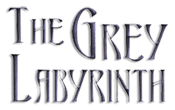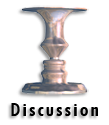by Kevin J. Lin
Three weighings is the best you can do in the worst case scenario. Divide the coins into four piles of two coins each, called A, B, C, and D. First, weigh pile A against pile B. If the two piles are equal in weight, you know that the counterfeit coin can't be in either of them. So it must be in C or D. If either A or B tips, you know the counterfeit coin is in one of these groups, but you can't be sure which. So after one weighing you know have isolated the coin to the AB pile or the CD pile.
Now take one of the two possible piles, and weigh the two coins of that pile against each other. If equal, the coin is one of the those two. If unequal it's one of the other two. Now after two weighings you have the isolated the coin to one of two.
In the end, you still do not know if the counterfeit coin was heavier or lighter than the rest. The following generalized solution was taken from the rec.puzzles archive:
Martin Gardner gave a neat solution to this problem. Assume that you are allowed W weighings. Write down the 3^W possible length W strings of the symbols '0', '1', and '2'. Eliminate the three such strings that consist of only one symbol repeated W times.
For each string, find the first symbol that is different from the symbol preceeding it. Consider that pair of symbols. If that pair is not 01, 12, or 20, cross out that string. In other words, we only allow strings of the forms 0*01.*, 1*12.*, or 2*20.* ( using ed(1) regular expressions ).
You will have (3^W-3)/2 strings left. This is how many coins you can handle in W weighings.
Perform W weighings as follows:
For weighing I, take all the coins that have a 0 in string position I, and weigh them against all the coins that have a 2 in string position I.
If the side with the 0's in position I goes down, write down a 0. If the other side goes down, write down a 2. Otherwise, write down a 1.
After the W weighings, you have written down an W symbol string. If your string matches the string on one of the coins, then that is the odd coin, and it is heavy. If none of them match, than change every 2 to a 0 in your string, and every 0 to a 2. You will then have a string that matches one of the coins, and that coin is lighter than the others.
Note that if you only have to identify the odd coin, but don't have to determine if it is heavy or light, you can handle (3^W-3)/2+1 coins. Label the extra coin with a string of all 1's, and use the above method.
Note also that you can handle (3^W-3)/2+1 coins if you *do* have to determine whether it is heavy or light, provided you have a single reference coin available, which you know has the correct weight. You do this by labelling the extra coin with a string of all 2s. This results in it being placed on the same side of the scales each time, and in that side of the scales having one more coin than the other each time. So you put the reference coin on the other side of the scales to the "all 2s" coin on each weighing.
Proving that this works is straightforward, once you notice that the method of string construction makes sure that in each position, 1/3 of the strings have 0, 1/3 have 1, and 1/3 have 2, and that if a string occurs, then the string obtained by replacing each 0 with a 2 and each 2 with a 0 does not occur.
If you already know the odd coin is heavy (or light), you can handle 3^W coins. Given W weighings, there can only be 3^W possible combinations of balances, left pan heavy, and right pan heavy.
The algorithm in this case:
Divide the coins into three equal groups... A, B, and C. Weigh A against B. If a pan sinks, it contains the heavy coin, otherwise, the heavy coin is in group C. If your group size is 1, you've found the coin, otherwise recurse on the group containing the heavy coin.






